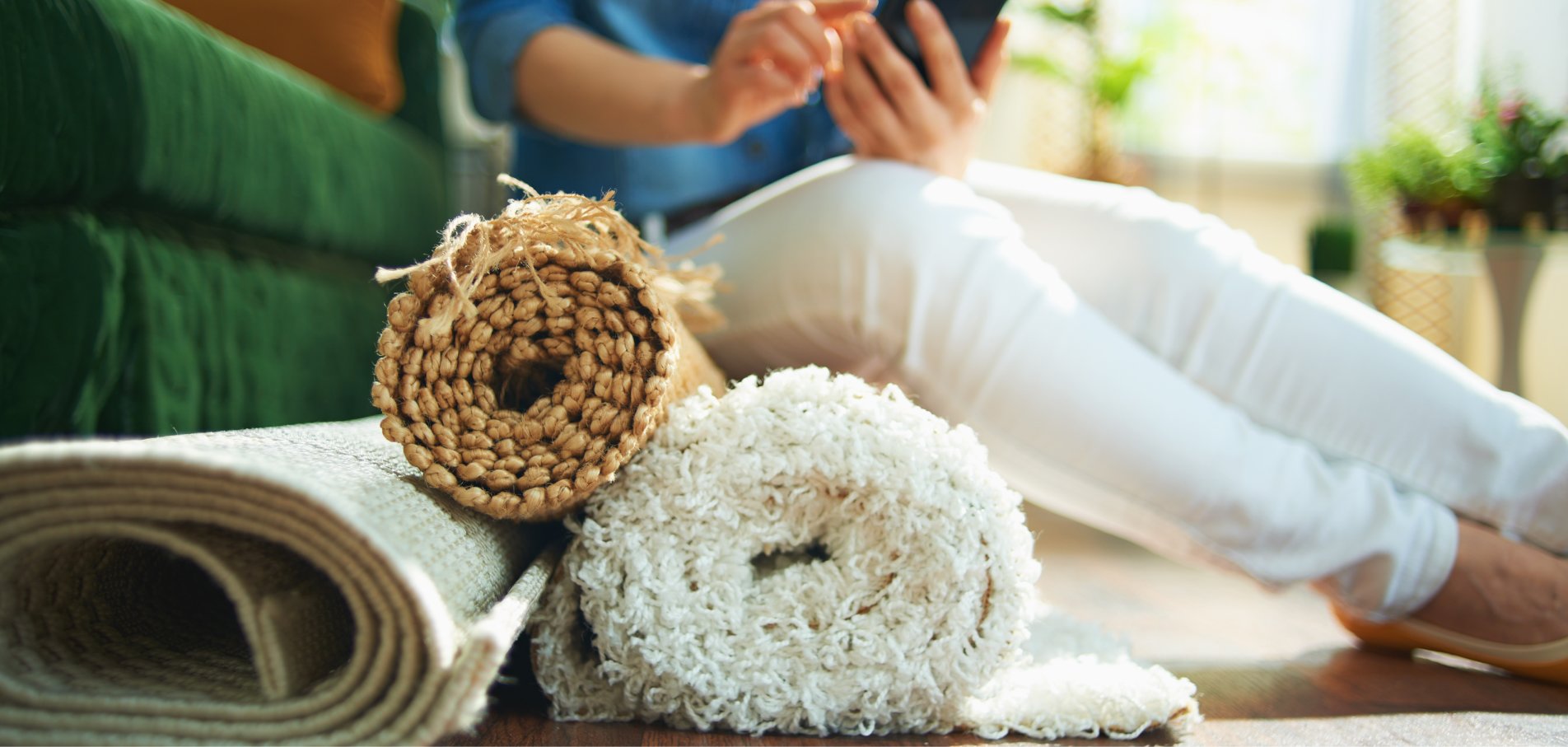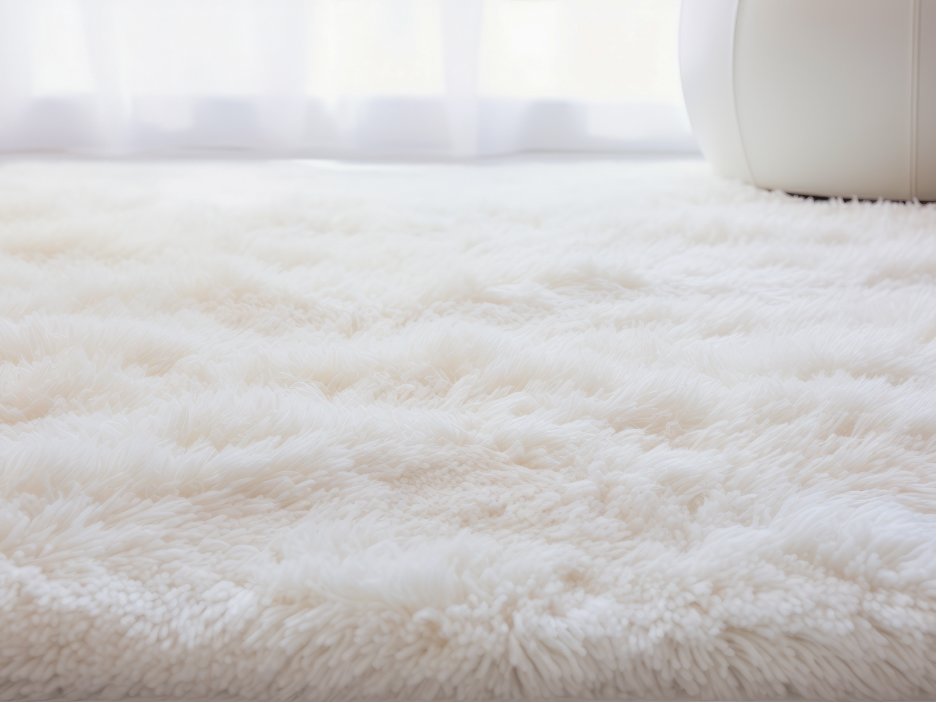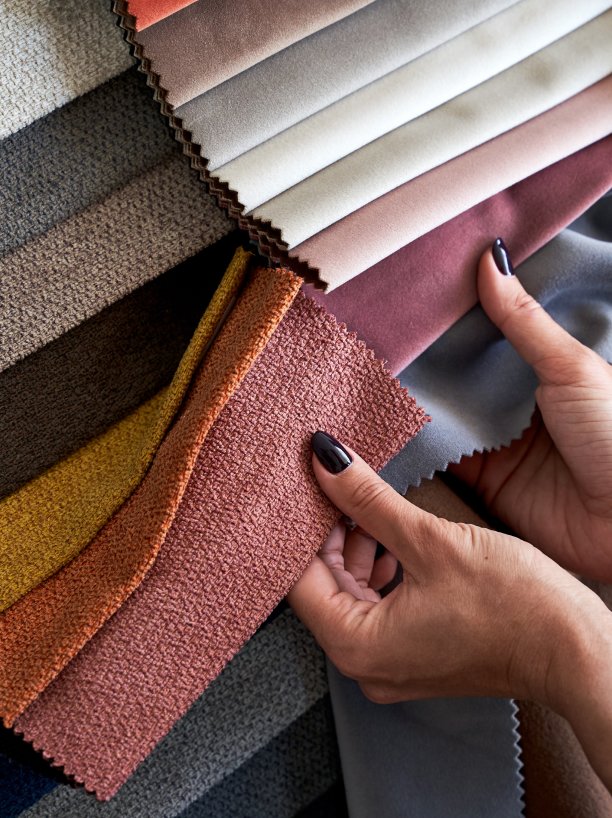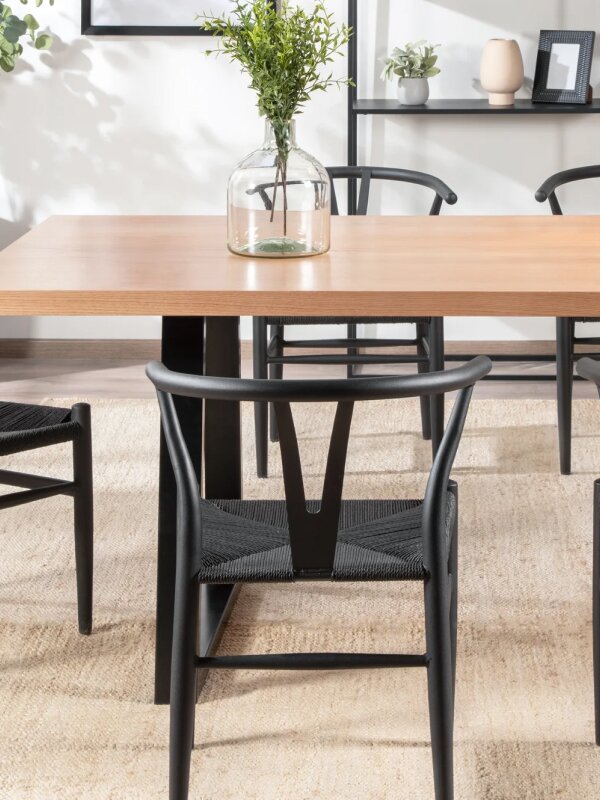How to Layer a Rug Like an Interior Designer


Layered rugs add a beautiful full coverage look to entryways, bathrooms, and living areas. Layered rugs anchor spaces and create a visual appeal that looks curated by the professionals. Learn the best tips and tricks to layer a rug like an interior designer with furniture.com.
1. Consider the Dimensions of the Space
Layered rugs look great in multiple spaces around the house, such as a welcoming entryway, a cozy bedroom, a classy dining room, and a comfortable kitchen. When deciding where to layer your rugs, first consider the dimensions of the space.
Large rooms, like a bedroom, living room, or dining room, are great places for layered rugs. A vintage patterned rug atop a natural woven rug anchors furniture and creates separate spaces within a larger room. Start with an area rug with a style you like, and pair it with a larger base that fills out the space.
A front entryway is the perfect place for layered rugs. Because of the size constrictions, use two smaller-sized doormats to fill this space or two vertical runner rugs leading away from the door.
Consider layering different levels of comfort in the bathroom and kitchen. We spend a lot of time standing in the kitchen and bathroom, so consider small to medium-sized layered rugs in this space for a cozy underfoot.
Large rooms, like a bedroom, living room, or dining room, are great places for layered rugs. A vintage patterned rug atop a natural woven rug anchors furniture and creates separate spaces within a larger room. Start with an area rug with a style you like, and pair it with a larger base that fills out the space.
A front entryway is the perfect place for layered rugs. Because of the size constrictions, use two smaller-sized doormats to fill this space or two vertical runner rugs leading away from the door.
Consider layering different levels of comfort in the bathroom and kitchen. We spend a lot of time standing in the kitchen and bathroom, so consider small to medium-sized layered rugs in this space for a cozy underfoot.
2. Select a Pile
Rug pile refers to the density of the fibers. Rugs come in low piles, which are flat and dense, or high piles, which are long and shaggy.
When layering your rugs, you generally don’t want your rug piles to match — e.g., having two high-pile rugs on top of one another. Create a balanced and cohesive look by putting a smaller high-pile rug atop a low-pile rug. While you can put a low-pile rug atop a high-pile rug, you generally want to treat your bottom layer like a flat base and bring in the comfort of a plush top rug.
When layering your rugs, you generally don’t want your rug piles to match — e.g., having two high-pile rugs on top of one another. Create a balanced and cohesive look by putting a smaller high-pile rug atop a low-pile rug. While you can put a low-pile rug atop a high-pile rug, you generally want to treat your bottom layer like a flat base and bring in the comfort of a plush top rug.
High Pile:
When you think high-pile, you probably visualize a shag rug. The tall, loose fibers give these styles a soft feel that makes them ideal for bedrooms or the living room.
When you think high-pile, you probably visualize a shag rug. The tall, loose fibers give these styles a soft feel that makes them ideal for bedrooms or the living room.
Low Pile:
With shorter fibers, these rugs lay low to the ground and are perfect for spaces with a lot of foot traffic, like entryways or the kitchen. Sisal, jute, woven wool, and polyester are all low-pile rugs.
With shorter fibers, these rugs lay low to the ground and are perfect for spaces with a lot of foot traffic, like entryways or the kitchen. Sisal, jute, woven wool, and polyester are all low-pile rugs.
3. Select a Base
When choosing your rugs, ensure they are not too close in size. A rug base should be larger than the top layer, so you can see enough variation for the layered look. A good rule of thumb is to not let the top rug be more than ⅔ of the area of the bottom one.
When choosing the color of your rug base, there are a few different options for how you can style them into your space:
When choosing the color of your rug base, there are a few different options for how you can style them into your space:
•
A neutral base is a safe option for layering your rugs, helping to ground the bottom layer while allowing the patterns and colors of the top rug to shine. Jute and sisal are great natural-colored options for a base rug.
•
If neutral is not your style, feel free to have fun with your design and do a pattern-on pattern. However, you may want to choose one color that will tie the whole theme together so the rugs look complementary.
4. Place the Top Layer
When you place the top layer, choose a rug that coordinates with the base rug. Whether you’re going bold with a deep color and pattern, or staying seasonal with florals or holiday patterns, ensure the rugs complement each other.
Once you have rugs that feel copacetic, center the rug for a symmetrical look or experiment with placement. Diagonal top rugs act as attention-grabbers and highlight an area of the room that you want to be seen. You can even place the top rug under a chair or table to highlight the space.
Once you have rugs that feel copacetic, center the rug for a symmetrical look or experiment with placement. Diagonal top rugs act as attention-grabbers and highlight an area of the room that you want to be seen. You can even place the top rug under a chair or table to highlight the space.
5. Add the Finishing Touch
Finish off your style with a few decorative or functional pieces that showcase your new additions. Here are some of our favorite ways to add the finishing touch.
Shop decor
Add poufs around the space for a bohemian vibe that pairs as extra seating.
Add an accent bench in your entryway as a welcoming and stylish seating solution.
Draw out the natural textures and colors with a decorative plant.
Final Considerations
•
Don’t layer rugs too similar in size.
•
Go bold on color or pattern, not both.
•
Don’t layer rugs too similar in pile height.
•
Feel free to mix textures for an organic feel.
•
Consider rug pads for an extra layer of stability.
•
Layer rugs over the carpet for an extra-cozy appeal.
Mix & Match Rugs With Furniture.com
Mixing and matching your rugs for a layered look creates balance, and cohesion, and adds beautiful color pathways to any room in the home. Browse our selection of quality rugs at furniture.com to find your perfect fit.
Shop all rugs




